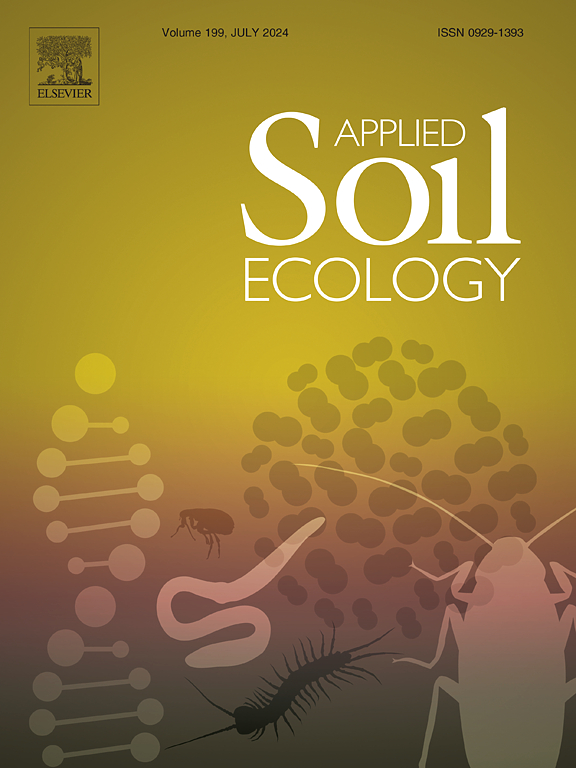Effects of nitrogen fertilizer replacement with different sourced-black soldier fly frass on rice growth, physiological characteristics and soil properties
IF 4.8
2区 农林科学
Q1 SOIL SCIENCE
引用次数: 0
Abstract
Application of black soldier fly larvae (BSFL) frass had significant effects on crop yield and soil quality. However, the effects of different sourced-frass on crops and soil had been largely unknown. Here, the effects of partial replacement (30 %) of nitrogen fertilizer with different BSFL frass sourced from pig manure (PBF), chicken manure (CBF), and kitchen waste (KBF) on soil properties, rice growth, and physiological functions were investigated. Control groups without nitrogen fertilizer (CK) and with pure chemical fertilizer (CF) were included. Compared with CF, all insect frass treatments increased soil pH. PBF treatment increased soil available nitrogen by 7.68 %, and both PBF and CBF increased available potassium contents by 8.50 %–8.54 %. Applying insect frass did not significantly affect the diversity and structure of soil microbial communities. Compared to CF, PBF enriched carbon-metabolizing phyla such as Chloroflexi (10.35 %) and eutrophic phyla like Actinobacteriota (27.45 %), as well as enriched soil families such as Gemmatimonadaceae and Geminicoccaceae. PBF improved the physiological characteristics in rice compared to CF and increased the photosynthetic rate (21.42 %) and sucrose synthase activity (32.00 %) of rice leaves at the booting stage. Moreover, the seed yield of PBF-treated rice showed a 7.94 % increase over CF, but KBF exhibited significantly lower seed yield compared to CF. In summary, the use of BSFL frass derived from pig manure as a partial substitute for nitrogen fertilizers had the most favorable impact on rice growth and physiological functions, surpassing the effects of purely chemical fertilizers.
求助全文
约1分钟内获得全文
求助全文
来源期刊

Applied Soil Ecology
农林科学-土壤科学
CiteScore
9.70
自引率
4.20%
发文量
363
审稿时长
5.3 months
期刊介绍:
Applied Soil Ecology addresses the role of soil organisms and their interactions in relation to: sustainability and productivity, nutrient cycling and other soil processes, the maintenance of soil functions, the impact of human activities on soil ecosystems and bio(techno)logical control of soil-inhabiting pests, diseases and weeds.
 求助内容:
求助内容: 应助结果提醒方式:
应助结果提醒方式:


